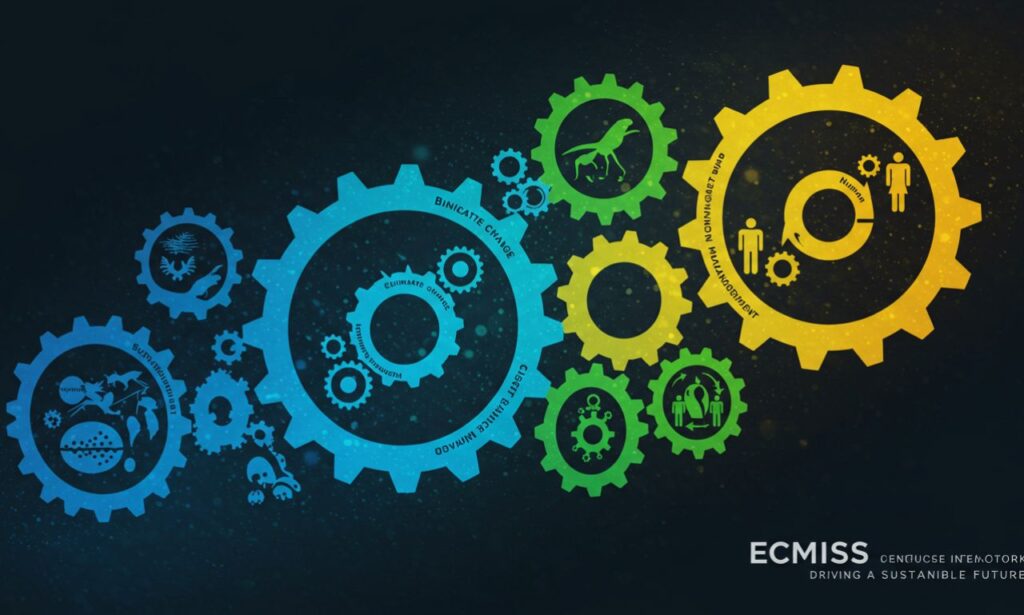ECMISS refers to a conceptual framework—often called Evolutionary Computational Modeling and Intelligent Systems Structure or Enterprise Content & Mission Intelligence Sharing System. It is emerging as a key architecture that unites edge computing, AI decision systems, adaptive modeling, workflow automation, and secure collaboration. As industries move toward distributed operations—with IoT, real-time analytics, and remote environments—ECMISS brings structure, agility, and resilience.
ECMISS: Key Definitions Across Industries
ECMISS as Evolutionary Modeling Architecture
In research contexts, ECMISS denotes systems that use evolutionary computing, simulations, and adaptive models to optimize decisions. These infrastructures enable continuous improvement in robotics, finance, weather modeling, and smart infrastructure planning.
ECMISS for Edge-AI and Real-Time Systems
When framed as Edge Computing for Mission Integration and Smart Systems, ECMISS refers to edge nodes, on-device AI inference engines, encrypted communication networks, and local workflows for mission-critical operations—ideal for healthcare, defense, industrial automation, and autonomous transport.
ECMISS as Enterprise Content Automation Gateway
As Enterprise Content & Mission Intelligence Sharing System, ECMISS describes platforms providing centralized data repositories, automation workflows, real-time collaboration, advanced search, and audit tracking—tailored for regulated industries like finance, education, and government.
ECMISS: Core Technical Components
Across variations, ECMISS platforms typically include:
-
Data and sensor input layer (edge or cloud-based)
-
Evolutionary or AI-driven modeling and simulation engine
-
Decision engine or inference layer for real-time action
-
Secure communication mesh with zero‑trust protocols
-
Workflow automation and enterprise integration modules
-
Logging, auditability, and access control to support compliance and traceability.
These layers empower systems to operate in unstable or disconnected environments, adapt to changing inputs, and drive strategic or operational decisions instantly.
ECMISS in Action: Example Applications
Smart City Infrastructure
ECMISS systems process traffic, pollution, energy usage, and emergency signals in real time. Using adaptive modeling, the system suggests reroutes, conservation strategies, and contingency plans with minimal human intervention.
Healthcare and Emergency Response
ECMISS-enabled devices like wearable monitors or mobile units perform triage, detect abnormalities, or trigger alerts even offline. This accelerates intervention and supports patient care continuity when synced with hospital systems later.
Manufacturing & Predictive Maintenance
Machines equipped with edge sensors and local decision logic can anticipate failures, adjust operations, and optimize production flow autonomously, reducing downtime and increasing accuracy.
Enterprise Document and Workflow Platforms
ECMISS-inspired solutions centralize documents, automate approvals, enforce security controls, and support real-time collaboration while preserving audit logs for compliance.
ECMISS vs. Legacy Systems
Traditional systems face clear drawbacks:
-
Centralized cloud architectures suffer from latency and single-point failure risk.
-
Document systems often require manual data entry, lack real-time insights, and struggle with flexibility.
-
Modeling tools seldom adapt without manual retraining.
ECMISS delivers transformative capabilities:
-
Decentralized edge inference and decision-making
-
Adaptive algorithms that learn in-context
-
Automated workflows that tie simulation to action
-
Granular security and audit control across nodes
-
Modular architecture that grows and adapts without full redesigns.
Benefits of Adopting ECMISS
-
Instantaneous decision-making via local processing at the edge.
-
High availability and resilience, even during connectivity loss.
-
Optimized resource usage, sending only critical data to central servers.
-
Real-time collaboration and controlled workflows in enterprise environments.
-
Enhanced security and compliance, due to encryption, audit logs, and access controls.
-
Scalable design, allowing incremental additions without major infrastructure overhaul.
-
Self-improving systems, using evolutionary or ML-based adaptation over time.
Challenges and Considerations
-
High technical complexity: implementing AI, edge computing, and secure mesh networks requires specialized expertise.
-
Upfront infrastructure costs: sensors, edge nodes, and secure networking can be expensive.
-
Talent shortage: few organizations currently have in-house evolutionary computing or edge security experts.
-
Lack of standardization: frameworks and documentation remain limited, slowing adoption.
-
Ethical concerns: decisions made autonomously by systems must be transparent and auditable.
A phased approach—starting with pilots and expanding via feedback loops—is often required for successful rollout.
Emerging Trends in ECMISS Development
-
Federated learning and neurosymbolic AI across distributed edge networks.
-
Blockchain integration for decentralized audit logs and consent verification.
-
Quantum-enabled edge computing for ultra-fast optimization.
-
Digital twins syncing physical and virtual spaces in real time.
-
Unified platforms integrating ECMISS frameworks with ERP, CRM, and analytics pipelines.
These innovations are elevating ECMISS from concept to strategic infrastructure for modern organizations.
How to Implement ECMISS in Your Organization
-
Prioritize mission-critical domains—logistics, emergency response, or industrial operations.
-
Begin with prototype pilots, testing edge inference and local modeling.
-
Involve digital architects and AI modelers early to ensure standards and security.
-
Train teams in ethical AI use, modeling practices, and secure networking.
-
Define KPIs—like latency, accuracy, uptime, and compliance metrics.
-
Build for incremental expansion, enabling modular growth without full system overhaul.
Early-stage adoption yields operational efficiency, improved response time, and competitive differentiation.
Conclusion
ECMISS represents more than a set of tools—it is a foundational blueprint for systems that operate with mission focus, adaptability, security, and autonomy. It bridges simulation models to real-world action, data to decision, and architecture to meaningful impact.
From adaptive healthcare diagnostics and predictive manufacturing to enterprise-grade document workflows and smart urban infrastructure, ECMISS defines the next generation of responsive, resilient systems.






